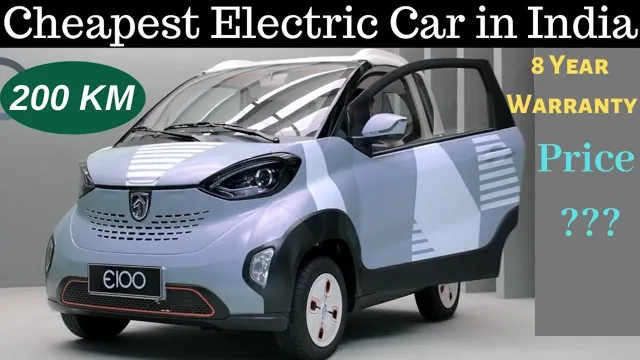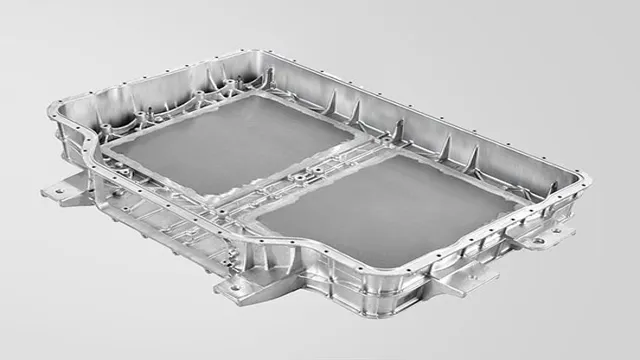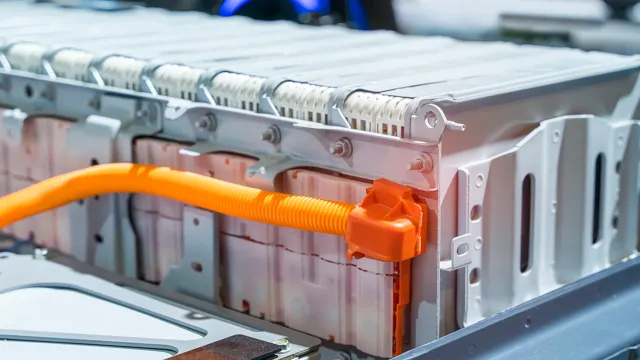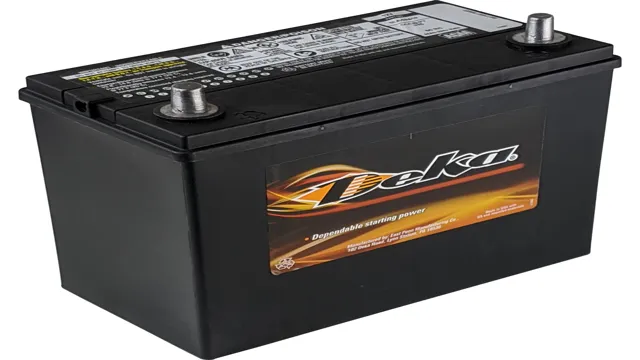Unveiling the Secret of Electric Car Battery: A Comprehensive Diagram Guide
Electric cars are the future of transportation. With the growing concern over climate change and the depletion of non-renewable resources, electric vehicles have become a popular alternative to traditional gas-powered cars. These cars run on electric motors and are powered by rechargeable batteries.
However, for most people, understanding how electric car batteries work can be a tricky task. That’s why we have created a comprehensive guide to help you understand the electric car battery diagram. Whether you’re a car enthusiast or someone considering buying an electric car, this guide will give you an in-depth understanding of electric car batteries, how they work, and their components.
Keep on reading to discover how electric car batteries can power your car and why they are the future of the automotive industry.
What is an Electric Car Battery?
An electric car battery diagram shows the various components that make up an electric vehicle battery system. At the heart of the battery is a series or a parallel arrangement of battery cells. These cells can be made up of a variety of materials such as nickel-cadmium, lead-acid, or lithium-ion.
The cells are connected together to create a battery pack that is designed to provide the necessary voltage and current required to operate the vehicle. The battery pack is managed by a battery management system (BMS), which monitors the state of charge, temperature, and health of the battery. In addition to the BMS, the battery system also includes a charger that converts AC power from the grid into DC power that can be stored in the battery.
Lastly, to provide power to the motor, the battery pack is connected to an inverter that converts the DC power stored in the battery into AC power that the motor can use. With advancements in technology, electric car batteries are becoming more efficient, with longer ranges and shorter charging times.
Explaining the Science Behind Electric Car Batteries
An electric car battery is essentially a rechargeable lithium-ion battery that stores electrical energy for future use. This technology is the backbone of electric vehicles, and it works by converting chemical energy into electrical energy. When you plug-in your electric car to recharge, electricity flows through the charger and into the battery, which causes a chemical reaction to occur, resulting in the creation and storage of electrical energy.
Think of it like a water tank that fills up when water flows through it, except in this case, the electricity flows through the battery and creates stored energy instead of water. The battery maintains this stored energy until it is used to power the car’s electric motor. When the car is in motion, the energy is converted back into electrical power and sent to the motor.
Compared to traditional gas-powered cars, electric cars have fewer moving parts and require less maintenance. Electric car batteries are also more environmentally friendly because they do not emit harmful pollutants and produce significantly less CO2 emissions during driving. As battery technology continues to improve, manufacturers are increasing their range and decreasing charging times, making electric cars even more attractive to consumers.
Overall, the electric car battery is a crucial component of a sustainable future for the automotive industry.
Components of an Electric Car Battery
Electric car battery diagram shows that the battery pack consists of several components that work together to power the vehicle. The battery pack contains one or more battery modules, which in turn contain numerous individual battery cells. Lithium-ion batteries are the most commonly used today in electric cars because they are lightweight, have a high energy density, and can be recharged quickly.
The battery pack also includes a battery management system (BMS), which ensures that the battery operates within safe limits and provides data on the battery’s health. The BMS controls the charging and discharging of the battery, prevents overcharging or over-discharging of individual cells, and regulates the temperature of the battery to prevent thermal runaway. The battery coolant system helps to keep the battery at the optimal temperature, and the power electronics system in the car converts the direct current from the battery to the alternating current required by the electric motor.
All the components of the electric car battery work together to provide clean and efficient power to the vehicle.
Cell Modules and Packs
When it comes to electric car batteries, there are two main components that make up the entire unit: cell modules and packs. Cell modules are the building blocks of the battery, consisting of a specific number of battery cells wired together in a particular arrangement. These cell modules are then grouped together to form a pack, which is what powers the electric vehicle.
Each pack consists of multiple cell modules, wired together to deliver the necessary voltage and capacity for driving. It’s important to note that the number and arrangement of cell modules can vary widely between vehicles, based on factors such as size, weight, and driving range. The main benefit of modular design is that it allows manufacturers the flexibility to create battery packs that meet the specific needs of each vehicle model, ensuring optimal performance and reliability.
Battery Management System
The battery management system (BMS) is an integral part of the electric car battery, as it helps to regulate and monitor the battery’s performance. Some of the main components of an electric car battery include the cells, the pack, the cooling system, and the management system. The cells are responsible for storing the energy and are often arranged in series or parallel to achieve the required voltage and capacity.
The pack, on the other hand, consists of multiple cells and helps to protect and balance them, preventing overcharging or discharging. The cooling system helps to maintain the optimal temperature within the battery, which can influence its longevity and performance. Lastly, the battery management system is responsible for monitoring the battery’s health and performance, ensuring that the cells are operating at their optimal levels and preventing any issues or failures.
Overall, a well-designed and maintained battery system is crucial for the efficiency and longevity of an electric car, and each component plays a crucial role in achieving this.
Types of Electric Car Batteries
Electric car batteries come in different types, each with its own pros and cons. One of the most common battery types is the lithium-ion battery, which is known for its high energy density, efficiency, and low maintenance. An electric car battery diagram for a lithium-ion battery would show several cells wired in series to create a battery pack.
Another type of battery is the nickel-metal hybrid battery, which is often used in hybrid electric cars due to its low cost and ability to provide both power and energy. A nickel-metal hybrid battery diagram would show a stack of positive and negative electrodes immersed in an electrolyte. Finally, there is the lead-acid battery, which is the oldest and least expensive type of battery.
This battery is often used in low-cost electric cars due to its affordability and ability to provide high power. A lead-acid battery diagram would show a series of lead plates immersed in an electrolyte solution. Whatever the type, electric car batteries are a crucial component in the electrification of transportation and play a key role in reducing greenhouse gas emissions.
Lithium-Ion Batteries
Lithium-ion batteries are one of the most popular types of batteries used in electric cars. They are known for their high energy density and long lifespan, making them ideal for powering electric vehicles. There are several different types of lithium-ion batteries, including lithium iron-phosphate, lithium cobalt oxide, and lithium manganese oxide.
Each type has its own set of advantages and disadvantages, and the choice of battery depends on factors such as cost, performance, and safety. Lithium-ion batteries are also highly reliable and efficient, making them the preferred choice for many electric vehicle manufacturers. With their advanced technology and ability to store large amounts of energy, lithium-ion batteries are paving the way for a more sustainable and eco-friendly future.
By utilizing this type of battery, electric cars can run for longer periods, making them a much more viable option for everyday use.
Lead-Acid Batteries
Lead-acid batteries are one of the oldest and most affordable types of electric car batteries. They have been commonly used in cars for decades, and even though there are newer types of batteries available, they are still a popular choice due to their low cost. These batteries work by converting chemical energy into electrical energy, and they use a liquid electrolyte to transfer the charge.
Lead-acid batteries are suitable for short-range driving and are commonly used in smaller electric cars. However, they are heavy and bulky, which makes them less efficient and reduces the overall performance of the vehicle. Furthermore, the acid contained in these batteries can be a safety hazard if not handled properly.
Nevertheless, lead-acid batteries are still a viable option for those on a budget or those who don’t require a high-performing electric car.
How to Read an Electric Car Battery Diagram
If you’re interested in learning about electric car batteries, it’s essential to know how to read an electric car battery diagram. The diagram displays the layout of the battery components and their connections, making it easy to understand how the battery works and how it can power the vehicle’s electric motor. Understanding the battery diagram is important because it allows you to troubleshoot any issues that may arise during use or maintenance.
By identifying individual components and their connections, you can determine whether there are any loose connections or damaged parts that need to be repaired or replaced. So, take some time to study the electric car battery diagram and familiarize yourself with the various components, their connections and functions, and be ready to troubleshoot any issues that may arise.
Interpreting the Symbols and Markings on the Diagram
Reading an electric car battery diagram may seem difficult at first, but with some knowledge, it can be straightforward. The diagram shows the battery’s internal components, including cells, connecting terminals, and busbars. Each component is represented by a symbol or marking.
Reading the diagram starts with understanding the symbols and markings used. For instance, a circle represents the battery cell, while a rectangle symbolizes the control board. Additionally, a plus sign (+) signifies the positive terminal, while a minus sign (-) represents the negative terminal.
Reading the diagram also requires understanding the connections between the components, which are shown by lines. The thicker the line, the bigger the connections it represents. Furthermore, understanding the marks on the batteries, including the voltage and current ratings, is vital.
Analyzing the marks will help determine the battery’s capability and potential applications. With practice, interpreting the symbols and markings on an electric car battery diagram will become easier, helping to diagnose issues and maintain the battery’s performance.
Conclusion: Understanding Your Electric Car Battery Diagram
In conclusion, the electric car battery diagram is like a complex jigsaw puzzle that fits perfectly together to power your vehicle. It’s the heart and soul of any electric car, providing energy for acceleration, speed, and overall performance. Think of it like a superhero’s power source – subtle and unassuming, but utterly essential for saving the day.
So, whether you’re a fan of renewable energy or just in need of a better ride, embrace the electric car battery diagram and enjoy a greener, cleaner, and more sustainable future on the road. After all, if it’s good enough for superheroes, it’s good enough for us mere mortals!”
FAQs
What are the components of an electric car battery?
An electric car battery includes cells, a battery management system, and a cooling and heating system.
How long do electric car batteries last?
The life span of electric car batteries varies depending on factors such as usage, charging habits, and temperature, but can typically last around 8-10 years.
Can electric car batteries be recycled?
Yes, most electric car batteries can be recycled and repurposed for other applications such as energy storage for homes and buildings.
How are electric car batteries charged?
Electric car batteries can be charged at home using a charging station, or at public charging stations located in various locations such as parking lots and shopping centers. They can also be charged using regenerative braking while driving.





